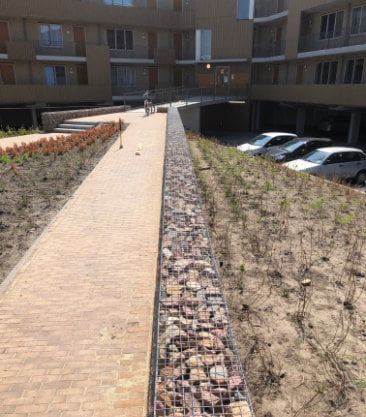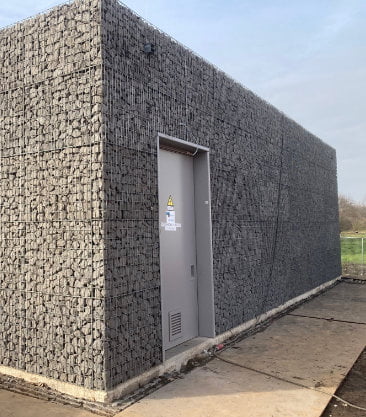
+31 (0)226 - 745992
+31 (0)226 - 745992
Downloads
Downloads

Facade and (Dam) Walls
Gabion walls are increasingly being used as facade cladding in utility and urban construction. Narrow and high gabion wall constructions need to be anchored to the underlying wall or structure, or built on a special support and bearing system. Insulating properties and the promotion of fauna and flora (creating habitats for birds, lizards, rock plants) play a role in these applications.
Gabion walls used as (dam) wall cladding are often placed near roads and waterways. The attachment method for gabion walls as (dam) wall cladding is similar to that for facade cladding. These applications not only contribute to functionality and sustainability but also add aesthetic value to the environment.


Application and Ecology
For these specific applications, welded gabions are commonly used. Welded gabions have a rectangular or square mesh opening and are typically made from ‘galfan’ wire, a steel wire with a pre-applied alloy consisting of 90% zinc (Zn) and 10% aluminum (Al).
Facade and walls constructed from gabion walls also serve as plantable “Ecowalls.” A small, rocky biotope is a rare ecosystem and can provide specialized flora and fauna with a habitat. This multifunctionality also demonstrates efficient use of space and is therefore a thoughtful approach to another scarce resource: space. In this way, gabion walls contribute to a sustainable and green solution for various ecological needs.

Filling
Various materials are possible for filling gabion walls, such as broken natural stone, crushed rubble, rejected bricks, or other suitable materials. Almost anything is possible as long as the filling is frost-resistant. It is also essential that the gradation of the filling matches the chosen mesh opening to prevent the filling from falling out. Alternatively, gabion walls can be filled with soil, with the inner side covered with a soil-retaining cloth or coir fibers.

